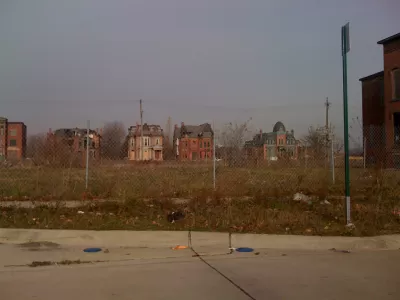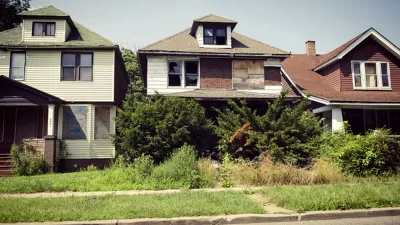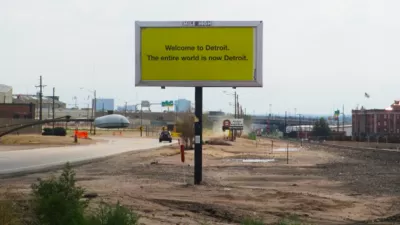In some cities and neighborhoods, the number of vacant properties is the only thing growing.

"Despite a drop in numbers across much of the United States since the recession, vacant and abandoned properties continue to dog struggling postindustrial cities, tearing apart neighborhoods with growing intensity," according to a on article sharing a new report from the Lincoln Institute of Land Policy.
Alan Mallach authored the report, titled The Empty House Next Door: Understanding and Reducing Vacancy and Hypervacancy in the United States. The report finds evidence of increasing vacancies in cities like Detroit, St. Louis, and Cleveland. According to the article, "the number of units that are effectively abandoned has increased by 2.1 million units nationally, from 3.7 million in 2005 to 5.8 million in 2016, an increase roughly equal to five times the entire housing stock of San Francisco."
The report not only accounts for the places where vacancies are rising, but also discusses both obstacles to addressing vacancies (like "cumbersome property tax foreclosure processes" and "state laws and bank practices that lead to thousands of properties being stuck in foreclosure limbo). Prescriptions and strategies for addressing the challenges created by vacancies are also discussed.
FULL STORY: Vacant properties plague struggling U.S. cities, according to new report

Alabama: Trump Terminates Settlements for Black Communities Harmed By Raw Sewage
Trump deemed the landmark civil rights agreement “illegal DEI and environmental justice policy.”

Study: Maui’s Plan to Convert Vacation Rentals to Long-Term Housing Could Cause Nearly $1 Billion Economic Loss
The plan would reduce visitor accommodation by 25% resulting in 1,900 jobs lost.

Why Should We Subsidize Public Transportation?
Many public transit agencies face financial stress due to rising costs, declining fare revenue, and declining subsidies. Transit advocates must provide a strong business case for increasing public transit funding.

Paris Bike Boom Leads to Steep Drop in Air Pollution
The French city’s air quality has improved dramatically in the past 20 years, coinciding with a growth in cycling.

Why Housing Costs More to Build in California Than in Texas
Hard costs like labor and materials combined with ‘soft’ costs such as permitting make building in the San Francisco Bay Area almost three times as costly as in Texas cities.

San Diego County Sees a Rise in Urban Coyotes
San Diego County experiences a rise in urban coyotes, as sightings become prevalent throughout its urban neighbourhoods and surrounding areas.
Urban Design for Planners 1: Software Tools
This six-course series explores essential urban design concepts using open source software and equips planners with the tools they need to participate fully in the urban design process.
Planning for Universal Design
Learn the tools for implementing Universal Design in planning regulations.
Smith Gee Studio
Alamo Area Metropolitan Planning Organization
City of Santa Clarita
Institute for Housing and Urban Development Studies (IHS)
City of Grandview
Harvard GSD Executive Education
Toledo-Lucas County Plan Commissions
Salt Lake City
NYU Wagner Graduate School of Public Service





























